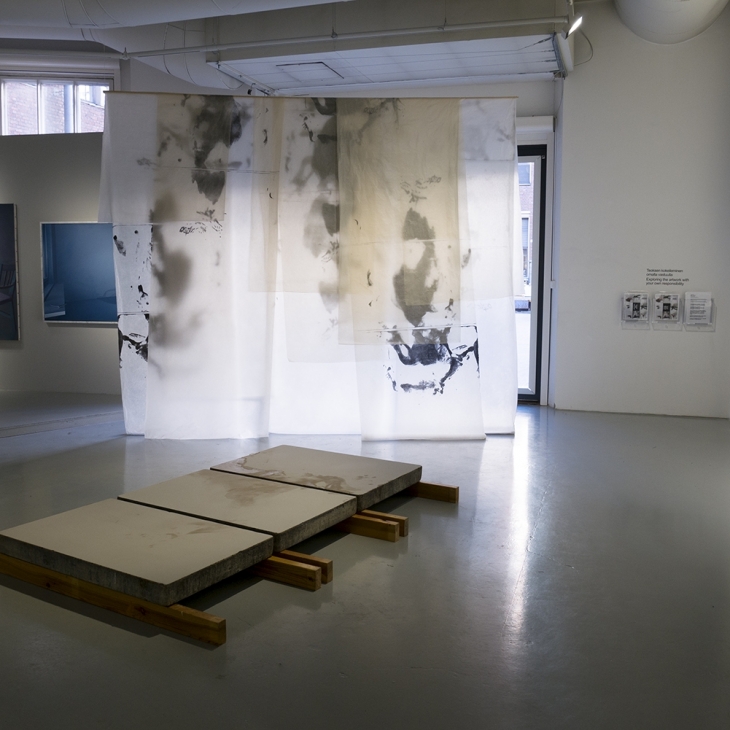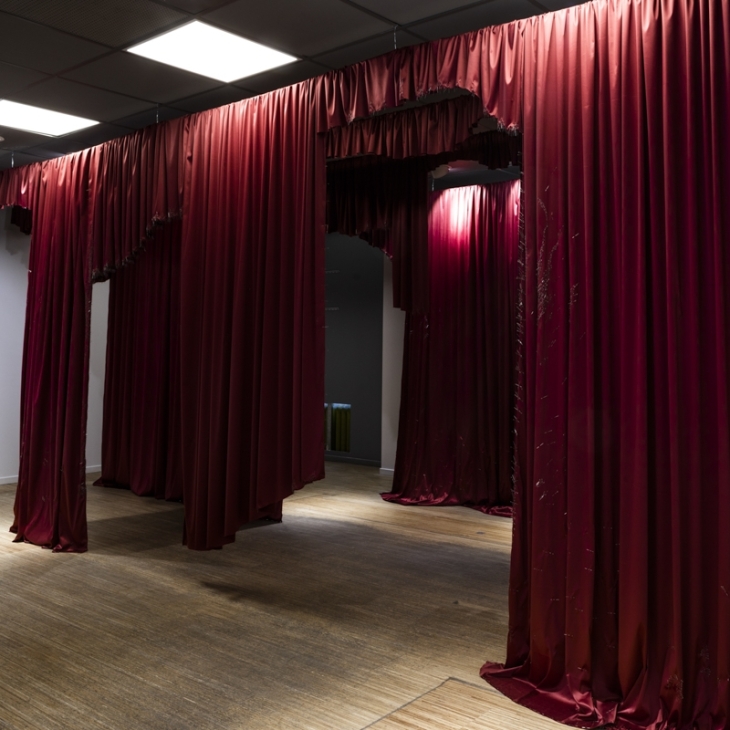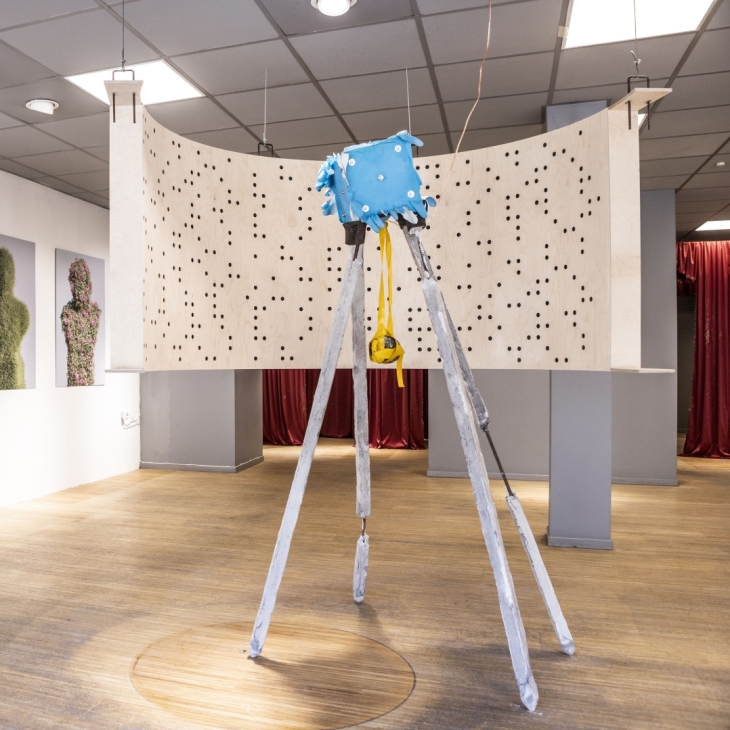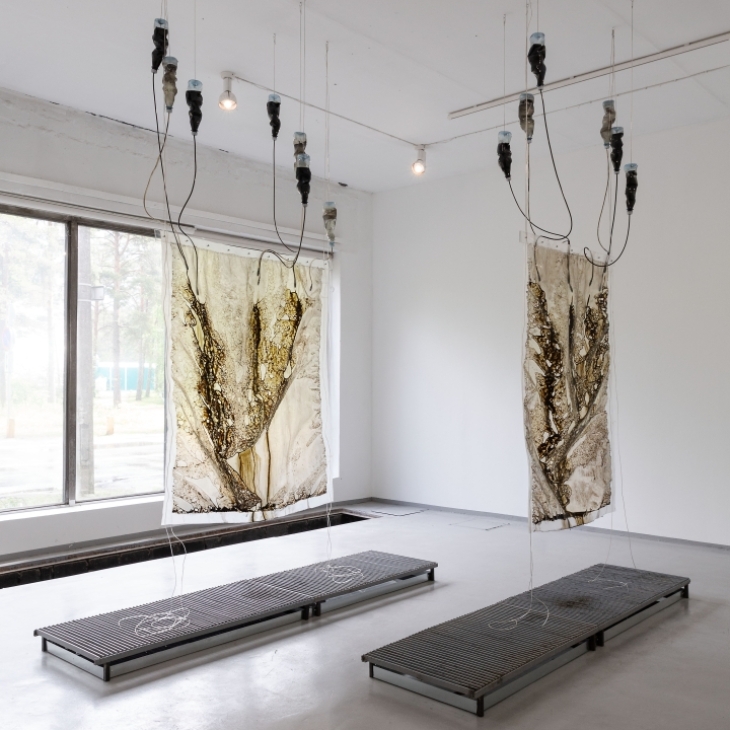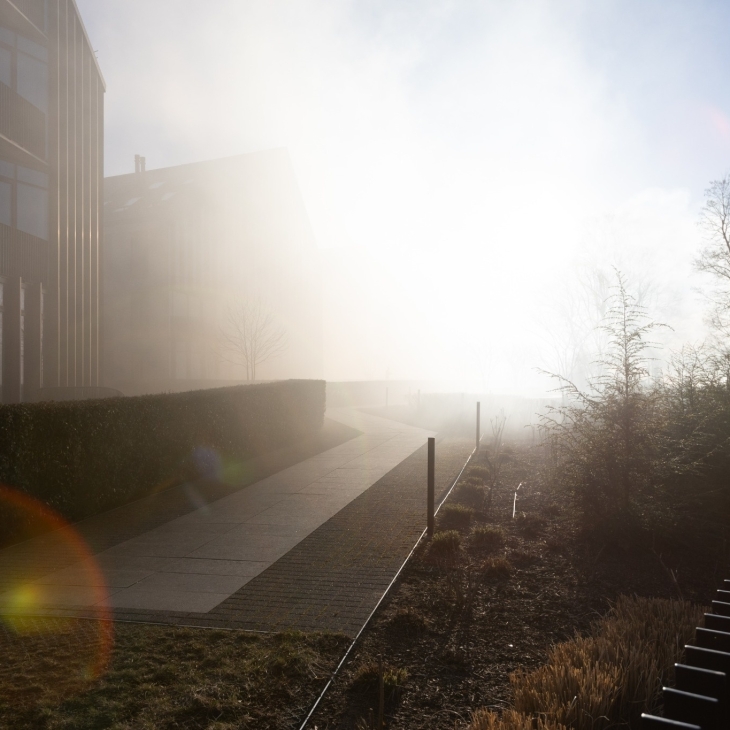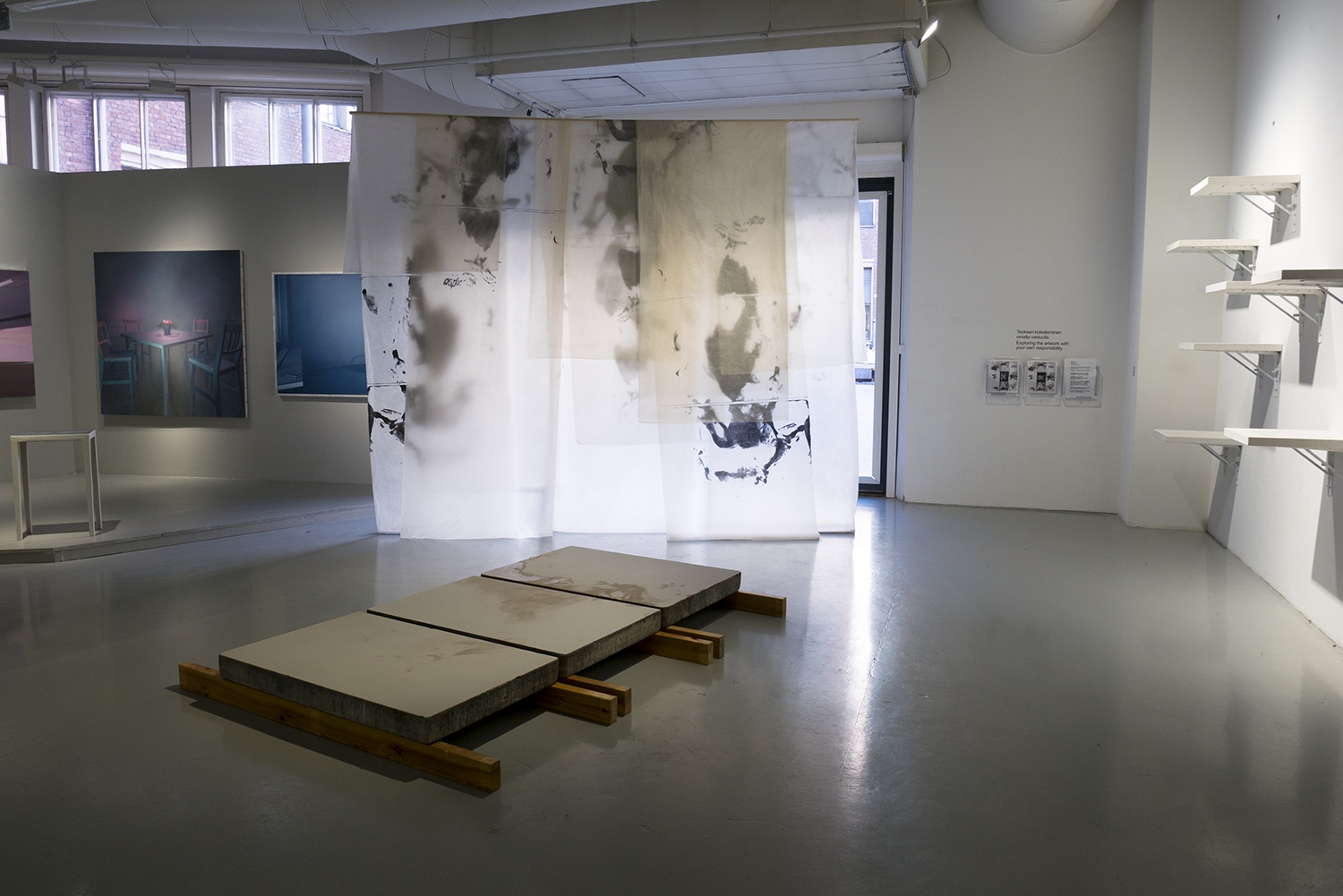Two Bodies, 2019
lithographic limestones, vaseline, lithographic prints on Japanese Gampi paper, wooden beams Through exploring notions of material and materiality, along with the meeting points and interactions between these elements, I seek to grasp the matter and presence of a touch as well as layering of memory. I am interested in contact and transformation that takes place when two surfaces meet and react. In my recent work Two Bodies exhibited at the MFA degree show Kuvan Kevät of the Academy of Fine Arts of Uniarts Helsinki, I make a comparison between the surface of a lithographic limestone and the surface of my own body. There are three lithographic stones elevated from the floor by the support of wooden beams. Not far from the head of the stones there are multiple prints on translucent Japanese Gampi paper layered on top of each other over a wooden slat hung from the ceiling. As my body moves as an artistic tool over the lithographic limestones, a corporeal trace that is both primitive and intuitive is left behind. The result is a recording of both conscious and involuntary body movements, composed of time through action. Limestone’s receptiveness to grease can be seen as an ability to memorize experiences, both positive and negative, in the same way that our bodies have the ability to memorize as well as inherit pain and trauma. In this process information is transferred from one surface to another, it is scanned and stored, and can then be repeatedly materialised as prints on paper. Because the lithographic process is based on a principle of water and grease being repellent towards each other, I used vaseline as a greasy agent between my body and the stone to ensure the recording of bodily movement. This substance acts as a metaphor for warmth of a human body, its fluids and fat, along with representing shelter, intimacy and touch. As part of the artistic process of creating Two Bodies after the first set of imprints of the body have been turned into series of impressions on paper, the stone is partially grained and then processed again. These steps allow printing another layer, now a memory of previous touch, on paper again. This action is then repeated once more before eliminating the image completely and leaving a clean, porous surface that awaits the future. As the work itself takes place in the moment at one body touching the other, the resulting print becomes the embodiment of movement. The translucency of Gampi paper enhances the layering of these experiences. When these two elements meet — the active body and the passive stone — matter and presence are captured through non-violent chemical reactions. In this meeting physical properties of the stone, strength, stability, but also adaptability become intertwined with the image and are in this way attributed to the body. Another experience while mapping and positioning my body is an apprehension of the extent of my own bodily surface in relation to the framework, as well as the flatness, of the stones. In this action a corporeal trace as an evidence of movement is made, but the bodiliness of the outcoming shape is changed, it is a less precise interpretation or a memory of a touch. Both surfaces – my body and the stone’s – are porous, absorbent, responsive; they hold on to the information introduced. There is contact and connection between them, but simultaneously the lack of it. Through inward looking sensitivity and commitment to the process between different materiality, between artist and material, I am focusing on notions of touch and erasure as well as exploring bodily awareness, presence and connectivity between intention and action.

